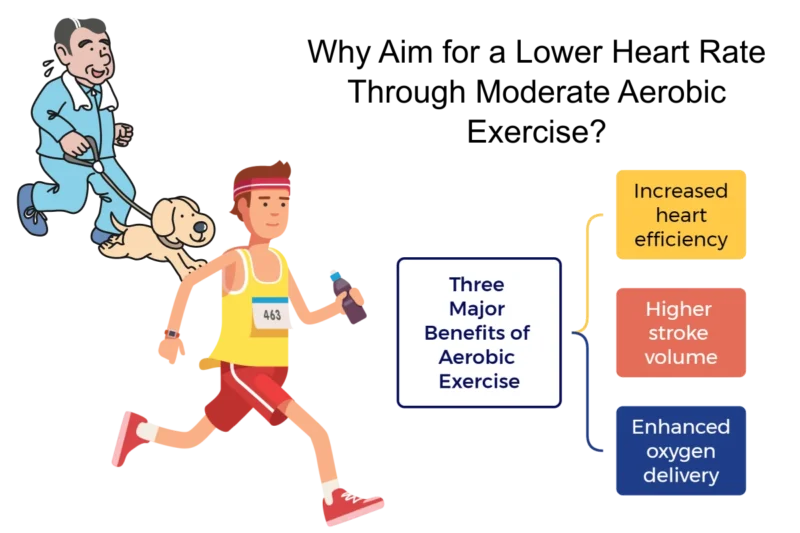Updated | October 5, 2025

Waking up before sunrise, I prepared for my weekend run—but my blood pressure monitor showed something unexpected. My resting pulse rate? Just 45 beats per minute.
Should I be worried? Not necessarily. Here’s why a low resting pulse rate may be normal, especially for active adults like me.
Table of Contents
Why I Check My Resting Pulse Rate
I run two to three times a week, but busy office life sometimes gets in the way. Despite this, I remain committed to maintaining my routine for the greater goal of keeping healthy despite the pressures of daily life at work and at home.
Earlier, I bought a cheap wrist blood pressure monitor to replace the old one I had used for regular checking of my blood pressure in a bid to prevent future health problems, particularly those that relate to high blood pressure.
High blood pressure runs in the family. But I don’t want to experience problems associated with cardiovascular disease (CVD) seeing my father getting confined in a wheelchair due to episodes of stroke. It’s kind of traumatic dealing with such health issue. I want a better life despite the probability of having it. So my strategy is to monitor my blood pressure daily and do things to prevent surges in blood pressure.
When I used the blood pressure monitor I just bought, I found it defective. It records higher than the other one I can confidently rely on: a conventional sphygmomanometer where you have to press a rubber bulb to fill an arm band filled with air. The new blood pressure monitor’s ready is higher by 20mm Hg.
I was forced to return it to the drugstore. I switched to the Omron Automatic Blood Pressure Monitor HEM-7121, which (according to its manual) uses IntelliSense Technology for accurate and comfortable upper-arm measurements. Omron claims that this gadget provides accurate and comfortable upper arm blood pressure measurement with its so called enhanced IntelliSense Technology whatever that is.
Even the saleslady mentioned that many people face similar issues with cheaper wrist monitors, which often give alarmingly high readings. I thought my purchase of the more expensive wrist monitor justifies its use, i.e., more accurate readings to monitor my running performance.
My Resting Pulse Rate: 45!
Today, after taking three measurements over 12 minutes, my blood pressure was healthy at 123/80 mm Hg—but my resting pulse rate was only 45 beats per minute! For context, in 2014, it was 44 bpm.
Well, I’m glad I maintained my condition after four years (even at this time, 2025). My blood pressure is still within normal range despite mostly working in front of my desk doing course planning, administrative work, writing manuscripts and research project reports, and blogging a lot to keep the website within the sights of Google.

At first glance, a resting pulse rate this low might seem alarming. But there’s more to the story.
What Is a Healthy Resting Pulse Rate?
According to the National Institute of Health (NIH), a normal resting pulse rate ranges from 60 to 100 beats per minute. Anything lower may indicate bradycardia, a condition where the heart beats abnormally slow.
Athlete vs. Average Individual Heart Rate
However, well-trained athletes often have resting pulse rates between 40 and 60 bpm. For example, elite athlete Daniel Green has a resting pulse of just 26 bpm. Here are more details on the difference between the athlete and the average individual heart rate.
Why the Difference?
Why is there a difference between an athlete and an average individual heart rate? I list them using three advantages namely increased heart efficiency, higher stroke volume, and enhanced oxygen delivery.
Increased Heart Efficiency
An athlete’s heart becomes more efficient from consistent training. It pumps a greater volume of blood with each beat, hence needing fewer beats per minute to maintain optimal bodily function. More oxygen is available to burn food and supply the much needed nutrients that the body needs.
Higher Stroke Volume
Athletes have a higher stroke volume, meaning the amount of blood ejected by the heart with each beat is greater, contributing to the lower heart rate. There are more blood vessels created by the greater pressure exerted by blood to the circulatory system as a result of aerobic training.
Enhanced Oxygen Delivery
The body of an athlete adapts to extensive cardiovascular training, resulting in enhanced oxygen delivery to muscles and improved overall endurance. Training effect is achieved with consistent exercise.
According to a popular aerobics exercise guru, Dr. Kenneth H. Cooper, the training effect can be achieved in 16 weeks. I got hold of his early aerobics book which guided me on how to reach this goal. Once you experience the training effect, running is virtually effortless and can be sustained for hours.
Benefits of Lower Resting Heart Rate
There are two major benefits to be derived from having a lower resting heart rate in the aspects of endurance and performance and recovery.
- Endurance and Performance: A lower resting heart rate is often an indicator of higher cardiovascular fitness and endurance levels.
- Recovery: Efficient heart function facilitates quicker recovery times post-exercise.
Overall, the lower resting heart rate in elite athletes is a testament to their advanced cardiovascular fitness, allowing them to perform exceptionally with less strain on the heart.
Athlete resting heart rate, especially the elite ones, is way below the average individual’s heart rate. It’s like a Lamborghini’s engine that performs to the max, much more efficiently with less effort, compared to an ordinary car.
Why a Low Resting Pulse Rate Isn’t Always Dangerous
Since I’ve been running consistently for years, my heart is well-conditioned. A low resting pulse rate in healthy, active adults usually indicates a strong, efficient heart—not a problem.
Monitoring your pulse rate over time can help you gauge fitness progress. If you notice sudden changes or experience symptoms like dizziness or fatigue, it’s worth consulting a doctor. Moderate exercise is still the best. Don’t overdo it.
How to Lower Resting Heart Rate and Keep Healthy
The Department of Health and Human Services (HHS) recommends:
- At least 150 minutes of moderate aerobic activity per week (about 30 minutes daily)
- Combining moderate and intensive workouts for weight management and cardiovascular health
- Regularly tracking your resting pulse rate to benchmark fitness improvements
Even on rainy days, I adjust my running routine—like heading to roofed bleachers—so I stay consistent with my 3–4 mile runs in about 30 minutes.
Conclusion
A resting pulse rate of 45 is not automatically alarming, especially for those who are physically active. Regular exercise, proper monitoring, and awareness of your body’s signals are key to maintaining a healthy heart.
Happy running! 🙂



Very life story. I also run in the morning and do sports. I do not eat fried meat and try not to drink soda. I buy only vegetables and fruits in order to eat healthy foods. I am a cook at university and I know how to cook tasty. But the university gives many tasks. And in my free time I invite friends to visit me and cook delicious food.